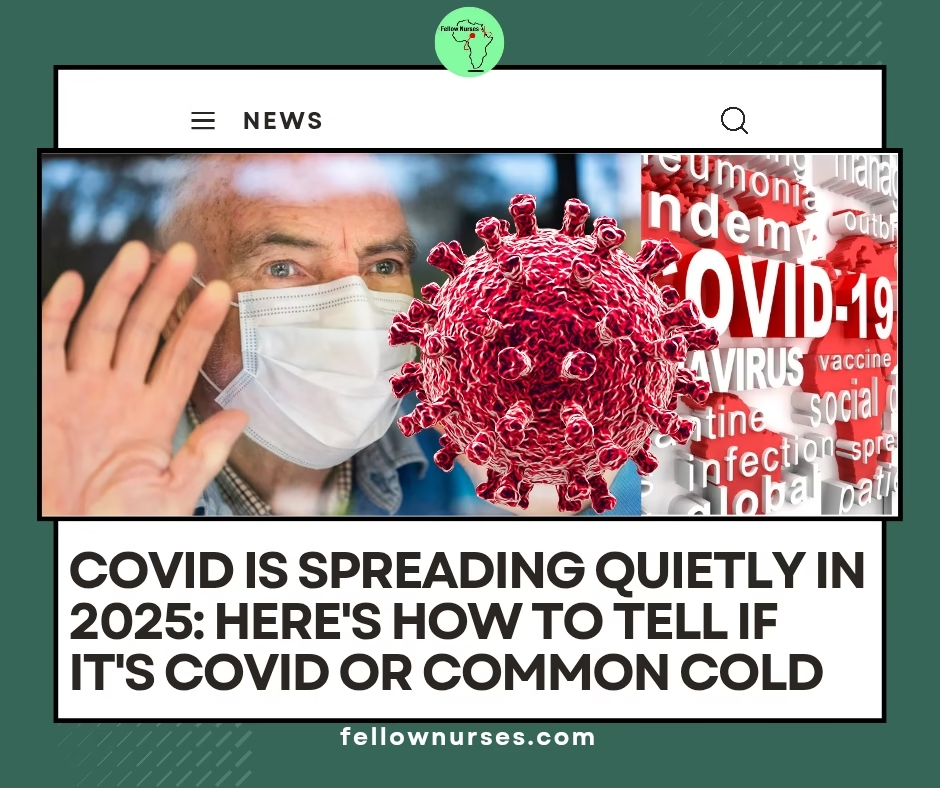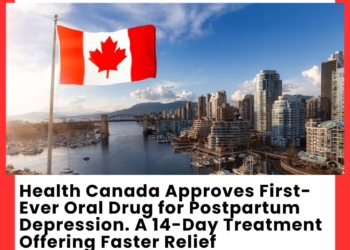Fellow Nurses Africa | Lagos, Nigeria | 12 September 2025

With respiratory illnesses circulating year-round, knowing whether you have COVID or a common cold can help you make better health decisions and protect others. Here’s everything you need to know about recognizing, preventing, and managing COVID symptoms.
Key Differences: COVID vs Common Cold vs Flu
COVID Symptoms to Watch For
Most Common COVID Signs:
- Persistent dry cough lasting several days
- Fever (often 100.4°F/38°C or higher)
- Extreme fatigue that doesn’t improve with rest
- Loss of taste or smell (though less common with recent variants)
- Shortness of breath that develops gradually
COVID-Specific Indicators:
- Symptoms last longer than typical cold (weeks vs days)
- Breathing difficulties that worsen over time
- Unusual body aches and headaches
- Digestive issues like nausea or diarrhea
Common Cold Symptoms
- Runny or stuffy nose (primary symptom)
- Mild cough and sore throat
- Low-grade fever or no fever
- Symptoms typically resolve within 7-10 days
- Gradual onset and improvement
Flu Symptoms
- Sudden onset of high fever
- Severe body aches and chills
- Intense headache and fatigue
- Symptoms usually last 3-7 days
- Seasonal pattern (fall/winter peaks)
You Can’t Tell by Symptoms Alone
Critical Point: Medical experts emphasize that symptoms alone cannot reliably distinguish between COVID, flu, and colds. Testing is essential for accurate diagnosis.
When to Test:
- Any respiratory symptoms appear
- After known COVID exposure
- Before visiting high-risk individuals
- If symptoms worsen or persist longer than expected
Testing Options:
- At-home rapid tests: Quick results, widely available
- PCR tests: More accurate, longer processing time
- Combination tests: Detect COVID and flu simultaneously
Proven Prevention Strategies
Stay Up-to-Date with Vaccines
Updated COVID vaccines for 2025 target current circulating variants. Most adults should receive annual COVID vaccination, similar to flu shots.
Practice Smart Hygiene
- Hand washing: 20 seconds with soap and water, especially after public spaces
- Avoid face touching: Keep hands away from eyes, nose, and mouth
- Surface cleaning: Regularly disinfect frequently touched items
Master Respiratory Etiquette
- Cover coughs and sneezes with your elbow
- Wear masks in crowded indoor spaces
- Stay home when experiencing symptoms
- Maintain distance from others when sick
Improve Indoor Air Quality
- Open windows for fresh air circulation
- Use air purifiers with HEPA filters
- Ensure good ventilation in living and working spaces
What to Do If You Test Positive
Immediate Steps
- Isolate immediately: Stay away from others, including household members
- Notify close contacts: Inform people you’ve been around recently
- Monitor symptoms: Watch for worsening breathing difficulties
- Stay hydrated: Drink plenty of fluids and rest
Isolation Guidelines
- Minimum 5 days from symptom onset or positive test
- Stay isolated until fever-free for 24 hours without medication
- Continue masking around others for 5 additional days
- Return to normal activities when symptoms improve
When to Seek Medical Help
Call your doctor if you experience:
- Persistent high fever (over 103°F/39.4°C)
- Difficulty breathing or chest pain
- Severe headache or confusion
- Inability to keep fluids down
- Worsening symptoms after initial improvement
Seek emergency care for:
- Severe breathing difficulties
- Chest pain or pressure
- Confusion or altered mental state
- Blue lips or face
- Severe dehydration
High-Risk Groups Need Extra Protection
People at Higher Risk:
- Adults 65 and older
- Individuals with chronic conditions (diabetes, heart disease, lung disease)
- Immunocompromised individuals
- Pregnant women
Enhanced Precautions:
- Prioritize vaccination and boosters
- Wear high-quality masks (N95, KN95) in public
- Limit exposure during community surges
- Consult healthcare providers early if symptoms develop
Getting Help Faster: Know Your Resources
Healthcare Access Points
- Primary care physician: First contact for assessment
- Telehealth services: Remote consultations for initial evaluation
- Urgent care centers: For non-emergency symptoms
- Emergency rooms: For severe symptoms only
Insurance and Cost Considerations
- Many insurers cover COVID testing and treatment
- Free testing often available through health departments
- Patient assistance programs for uninsured individuals
Digital Health Tools
- Symptom tracking apps
- Virtual consultation platforms
- Online prescription services
- Reliable health information websites
Long COVID: What to Know
Some people experience persistent symptoms weeks or months after initial COVID infection, known as Long COVID or Post-COVID conditions.
Common Long COVID Symptoms:
- Ongoing fatigue and weakness
- Brain fog or memory problems
- Shortness of breath
- Joint and muscle pain
- Sleep disturbances
If symptoms persist beyond 4 weeks, consult your healthcare provider for evaluation and management strategies.
Stay Informed with Reliable Sources
Trusted Health Information:
- Centers for Disease Control and Prevention (CDC)
- World Health Organization (WHO)
- Your local health department
- Healthcare provider recommendations
Avoid misinformation by verifying health claims through official medical sources and consulting healthcare professionals for medical advice.
Key Takeaways
- Testing is essential – symptoms alone can’t distinguish COVID from other respiratory illnesses
- Prevention works – vaccination, hygiene, and respiratory etiquette reduce transmission
- Isolate when sick – protect others by staying home until fever-free for 24 hours
- Know when to seek help – monitor symptoms and get medical care for severe signs
- Stay informed – rely on trusted health sources for accurate information
By understanding these key differences and prevention strategies, you can better protect yourself and your community while navigating respiratory illness season. Remember: when in doubt, test and consult healthcare professionals for personalized medical advice.
Fellow Nurses Africa is the independent voice of African Nurses. We educate, inform and support the nursing profession.










